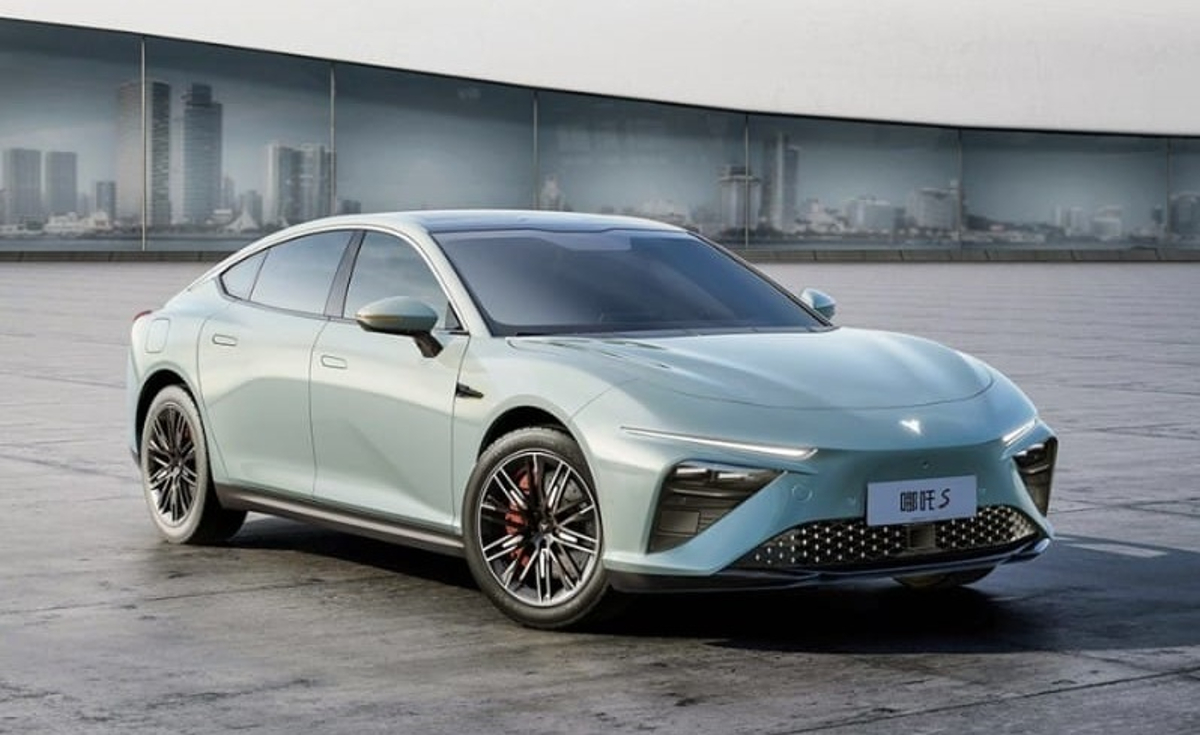Sign up for daily news updates from CleanTechnica on email. Or follow us on Google News!
CATL, the world’s largest battery manufacturer, is not waiting for customers to come knocking on its door to buy batteries for their electric models. Oh, no. It has created what it calls its CATL Integrated Intelligent Chassis — a skateboard design that incorporates all the bits and pieces needed to make a fully functional electric car. All a customer would need to do is mount a body on top of the skateboard to have a finished product that could be sold to retail customers.
This sounds a lot like what Canoo is doing. It makes a skateboard that contains all the batteries, motors, suspension, and brakes, then mounts a variety of bodies — which it calls top hats — on top of the skateboard. The top hats are configurable to meet the needs of a variety of customers, from minivan, to pickup truck, to ambulance. They are the epitome of purpose built vehicles, something that Hyundai is very interested in manufacturing at its newest factory in Singapore.

CATL CIIC Skateboard
CATL says its CIIC skateboard platform also integrates battery packs, motors and other components into one basic chassis. Car News China reports the first partner that signed an agreement with CATL to use their skateboard chassis was Chinese EV builder Hozon Auto, which owns the Neta brand. Both companies partnered to develop the platform together and announced the first CIIC powered model will be launched in the third quarter of 2024. CIIC is supposed to bring a high level of integration between the car and chassis, reducing cost and the overall development cycle.
CATL chief scientist Wu Kai said the CATL Integrated Intelligent Chassis uses 10.5 kWh per 100 km and has a range of 1,000 kilometers in the rather optimistic Chinese range testing standard. By lightning like calculation, that suggests the skateboard has a battery size of 105 kWh.
During winter testing in Heihe in northern China and summer testing in Turpan, the battery pack demonstrated an efficiency of 75 percent. At minus 7 degrees Celsius, the range decreased by 30 percent. The test car was able to add 300 kilometers of range in 5 minutes using a DC fast charger. Kai disclosed those testing results while speaking at an automotive industry gathering at Dishui Lake and said they represented a breakthrough in CIIC development.
The skateboard chassis first hit the news only a year ago. CATL, at the time, promised a flat chassis integrating braking, steering and power electronics — in other words, an almost ready to drive electric car platform. It is also designed with flexibility in mind since the CIIC skateboard is adjustable in length and offers different battery positions. It also offers a “removable body.”
CATL And Cell To Chassis Technology
The CATL Integrated Intelligent Chassis fits well with the company’s Cell to Chassis (CTC) technology, which integrates main battery components into the vehicle floor, eliminating the need for separate battery packs. This can reduce the initial cost to users and energy consumption, increase the range per charge, and expand passenger space.
According to Chinese media, the CIIC chassis was tested in a compact sedan, presumably from Neta. The companies agreed in January that Hozon Auto’s EV brand would become the first start-up to utilize CATL’s skateboard chassis in China. Neta wants to release the first CIIC model in autumn 2024.
In other news this week, Neta opened its first plant outside China in Thailand. The company claims it delivered more than 12,000 vehicles in Thailand, accounting for 20 per cent of the country’s electric car registrations. By 2024, the brand aims to “gain a foothold in more than 50 countries and territories” and achieve export sales of 100,000 vehicles. When launching the skateboard chassis, CATL signed a memorandum of understanding with Vinfast but has not mentioned the Vietnamese manufacturer in recent news.
The Takeaway
Toyota has been thumping its chest lately and proclaiming its solid state battery technology will make an electric car with up to 745 miles of range possible — by 2030, or so. CATL, if the news from China is to be believed, will have a car with almost as much range ready to go as early as next year.
What is interesting here is that CATL is now talking like a Tier One supplier such as Magna or Foxconn. One can easily imagine many smaller companies like Mazda or Mitsubishi that do not have the resources needed to create electric cars in house might be tempted to let CATL do the heavy lifting so they can get competitive electrified products to market as soon as possible.
A BMW customer might be able to tell the difference in how a car handles or feels if it is sourced from an outside supplier but the average driver can’t tell whether the car they are driving is rear wheel drive or front wheel drive and could care less. CATL, it seems, is beginning to think outside the battery.
Have a tip for CleanTechnica? Want to advertise? Want to suggest a guest for our CleanTech Talk podcast? Contact us here.
CleanTechnica Holiday Wish Book
Our Latest EVObsession Video
I don’t like paywalls. You don’t like paywalls. Who likes paywalls? Here at CleanTechnica, we implemented a limited paywall for a while, but it always felt wrong — and it was always tough to decide what we should put behind there. In theory, your most exclusive and best content goes behind a paywall. But then fewer people read it!! So, we’ve decided to completely nix paywalls here at CleanTechnica. But…
Thank you!
CleanTechnica uses affiliate links. See our policy here.




